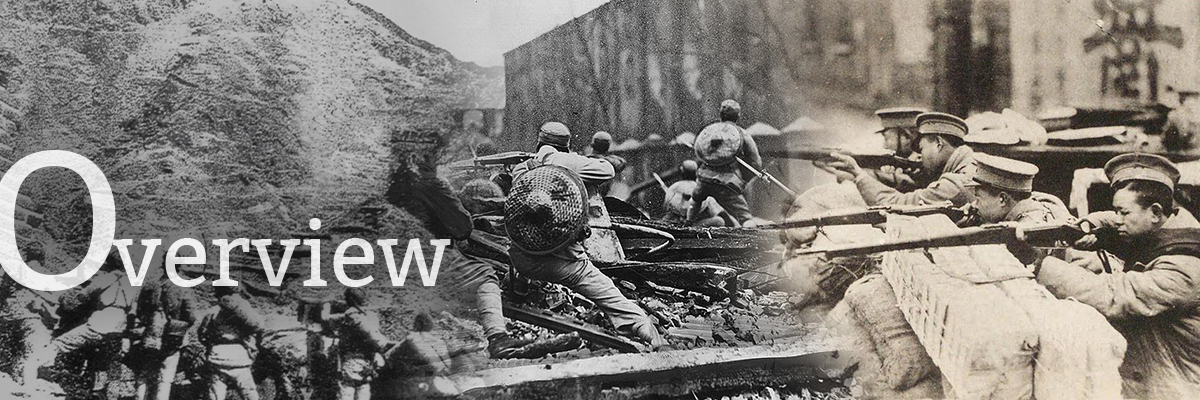After the Meiji Restoration, Japan pursued a basic national policy of foreign expansion, and one of the main objectives was to conquer the Chinese Mainland via Korea. This was Japan’s Continental Policy of invading China. Seeing that the Northern Expedition (北伐) brought reunification to China, Japan thus immediately accelerated its aggressive deployment. By launching the September 18th Incident in 1931, it occupied the whole Northeast China and established the puppet state of Manchukuo (偽滿洲國) headed by the abdicated Qing emperor Puyi (溥儀). Then, through plotting the January 28th Incident that aimed to attack Shanghai (上海) in 1932, it forced China to sign the Songhu Armistice Agreement (《淞滬停戰協定》, or Shanghai Ceasefire Agreement) and make Shanghai a demilitarised zone. Starting from 1933, Japan began to invade North China. It seized the Shanhai Pass (山海關), occupied the entire Rehe Province (熱河), and advanced further along the Great Wall, and then forced the Nationalist Government to sign the Tanggu Truce (《塘沽停戰協定》) and implement the He-Umezu Agreement (「何梅協定」). Next, Japan instigated the East Hebei Incident (冀東事變), carried out the North China Autonomous Movement, and established a puppet regime that placed the whole North China under its actual rule.
China’s Fourteen-year War of Resistance Against Japanese Aggression began after the September 18th Incident. Before the total war of resistance sparked off by the July 7th Incident in 1937, the Chinese people had already participated in many fights against the Japanese invaders, including the Counter-Japanese Guerrilla Warfare by the people of Northeast China, the Battle of Shanghai by the Chinese 19th Route Army, and the Defence of the Great Wall. However, the Nationalist Government pursued the policy of “first internal pacification, then external resistance” to achieve domestic stability first, and maintain an attitude of non-resistance, compromise or concession towards Japanese aggression. This aroused strong discontent from the public and the military, who demanded the cessation of civil war and the initiation of external resistance. This gave rise to the December 9th Movement in 1935 and the Xi’an Incident (西安事變) in December 1936 when Zhang Xueliang (張學良) and Yang Hucheng (楊虎城) launched an armed remonstrance at Chiang Kai-shek (蔣介石). The Xi’an Incident brought the decade-long civil war to an end, and commenced the second cooperation between the Kuomintang of China (中國國民黨) and the Chinese Communist Party (中國共產黨) to resist Japan.







